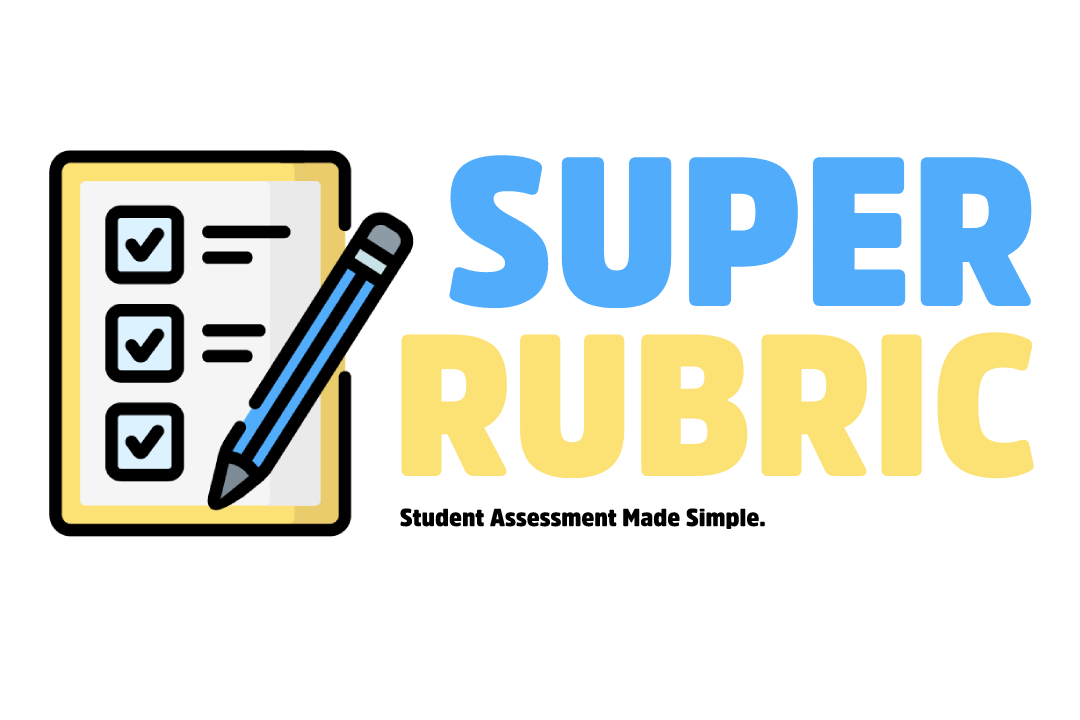
- Gradebook App
- Student Reports
- Training & Consulting
- Literacy Booster Offer
- Subscription Pricing
- Professional Development
- Our Mission
- Case Studies
- Privacy Policy & Terms of Service
- Review Mode


A Teacher’s Guide to a Short Story Writing Rubric
A short story writing rubric can your students become fantastic short story writers! Today, we’re going to dive into the world of short story writing rubrics—a tool that can make your teaching journey smoother and your students’ writing skills shine.
What’s a Short Story Writing Rubric, Anyway?
Before we dive in, let’s clear the air about what a short story writing rubric is. Think of it as your trusty roadmap for assessing and guiding your students through the process of crafting awesome short stories. It’s like a checklist, a set of guidelines, or even a secret recipe for creating engaging tales.
Why Do You Need a Short Story Writing Rubric?
You might be wondering, “Why should I bother with a rubric when grading short stories?” Well, here’s the scoop:
- Clarity : A rubric lays out your expectations for students in a clear and understandable way. No surprises!
- Consistency : It helps ensure that all your students are judged fairly and consistently, no matter who’s doing the grading.
- Feedback : Rubrics provide a structured way to give feedback. Instead of writing a novel on each paper, you can pinpoint areas for improvement efficiently.
- Growth : By using a rubric, you give students a roadmap for success, helping them see where they excel and where they need to improve.
Creating Your Short Story Writing Rubric

Step 1: Determine Your Criteria
Decide what aspects of short story writing are most important to you and your curriculum. Here are some common criteria to consider:
- Plot : Is the story engaging? Does it have a clear beginning, middle, and end?
- Characters : Are the characters well-developed and relatable?
- Setting : Does the story transport the reader to a specific time and place?
- Dialogue : Is the dialogue natural and does it advance the plot?
- Grammar and Style : Is the writing clear, and are there few grammatical errors?
- Creativity : Does the story stand out, offering fresh ideas or unique twists?
Step 2: Define Levels of Proficiency
For each of your criteria, create different levels of proficiency . Let’s use a four-level rubric as an example:
- Beginning : This level represents a starting point where students are just beginning to grasp the concept.
- Developing : At this level, students are making progress and showing improvement.
- Achieving : Achieving level indicates that students have reached a satisfactory level of proficiency.
- Mastering : This is the highest level, reserved for students who have demonstrated exceptional mastery of the criterion.
With these four levels, you can provide a more nuanced assessment of your students’ short stories and better guide their development.
Step 3: Describe Each Level
Now, describe what each level means for each criterion. Be specific! For example:
- Plot (Level 3) : The story’s plot is engaging, with a clear beginning, middle, and end. It includes unexpected twists that captivate the reader.
- Plot (Level 2) : The story has a good plot with a clear structure. While it’s engaging, there’s room for a bit more creativity.
- Plot (Level 1) : The story lacks a clear structure, making it difficult to follow.
Repeat these descriptions for all your criteria.
Using Your Short Story Writing Rubric
Alright, you’ve got your rubric ready , but how do you use it effectively?
- Share It : Start by giving your students the rubric before they start writing. This way, they know what you’ll be looking for.
- Self-Assessment : Encourage students to assess their own work using the rubric before turning it in. It’s a great way for them to identify areas they can improve.
- Peer Review : Have students exchange their stories and use the rubric to assess their classmates’ work. It promotes collaboration and helps students see different writing styles.
- Provide Feedback : When grading, use the rubric as a guide. Be sure to provide specific feedback on each criterion to help students understand where they excelled and where they can improve.
- Goal Setting : After grading, discuss the rubric with your students. Help them set goals for their next short story based on your feedback.
Final Thoughts
In the world of teaching short story writing, a rubric is like your secret sauce. It helps you create consistency, provide meaningful feedback, and guide your students toward becoming top-notch storytellers.
So, go ahead, create your short story writing rubric , and watch your students’ writing skills soar to new heights. Happy teaching, and may your classrooms be filled with captivating short stories!
That’s a wrap on our guide to short story writing rubrics for grade 7 teachers. We hope you found this information helpful and can’t wait to see the amazing stories your students will produce.
Try our Rubric Builder for Teachers!
Recent Posts
Report card writing made simple.
- Executive Functioning Rubrics are a Game Changer
The Teacher’s Guide to Mastering Orthographic Mapping
Can rubrics help with executive functioning skills.
- 5 Rubrics for Differentiated Instruction
Recent Comments
- 5 Reasons Teachers Love Analytical Rubrics - SUPERRUBRIC - SUPERRUBRIC.COM on 3 Rubrics for Elementary Reading & Writing
- A WordPress Commenter on Discussion Forum Rubric – Free Rubric Maker
Trending Now
- Book Report Rubric – Free Rubric Maker September 19, 2022
- Discussion Forum Rubric – Free Rubric Maker March 18, 2021
- 3 Rubrics for Elementary School [Analytic Rubrics] November 6, 2022
Recently Posted

Short Story Writing for Students and Teachers
What Is a Short Story?
The clue is in the title!
Short stories are like novels only…well…shorter! They contain all the crucial elements of fully developed stories except on a smaller scale.
In short story writing, you’ll find the key story elements such as characterization, plot development, themes explored, etc., but all within a word count that can usually be comfortably read in one sitting.
Short stories are just one of many storytelling methods; like the others, they help us derive meaning from our world.

How Do Short Stories Differ From Novels?
The reduced scale of a short story explains most of the differences the form has with longer forms such as novels.
Short stories usually have a tighter focus on a single main character and rarely shift between perspectives the way we often find in longer works of fiction.
Space is of the essence in this form, so long passages of exposition are usually avoided and the story starting at the last possible moment.
In purely numerical terms, short stories can be anywhere between about 1,000 to around 20,000 words or so, though many would consider even 10,000 too long.
A short novel clocks in at around 60,000 words, with word counts between 20-60,000 words being taken up by that red-headed stepchild of prose, the novella.
THE STORY TELLERS BUNDLE OF TEACHING RESOURCES

A MASSIVE COLLECTION of resources for narratives and story writing in the classroom covering all elements of crafting amazing stories. MONTHS WORTH OF WRITING LESSONS AND RESOURCES, including:
How to Write a Short Story
Good storytelling is an art. But, luckily it’s a craft too and, like any craft, the skills and techniques can be learned by anyone.
In this article, we’ll first take a look at some ways to kickstart the short story writing process, before taking a look at some of the structural considerations essential for students to understand before they write their short stories.
We’ll also explore some simple practical activities that will help students to draw on their creative resources and personal experiences to help bring their stories to life.
Finally, we’ll look at some general tips to help students put a final polish on their masterpieces before they share them with the world.
How t o begin a story

Create a Dramatic Question
The first thing a student needs to do when writing a short story is to create a dramatic question. Without a dramatic question, readers will have no motivation to read on as there will be no story .
This dramatic question can take many forms, but as it will be the driver of the plot, it will be the single most important element of the story.
Take the movie Rocky as an example. In it, an aging journeyman boxer, Rocky Balboa, answers two dramatic questions:
1. Will Rocky find love?
2. Can he become the Heavyweight Champion of the World?
Often the dramatic question is of this will she/won’t she type. But, whatever form it takes, there must be some obstacles put in the way of answering it.
These obstacles can come in the form of an external obstacle, such as an antagonist or a negative environment, or the form of an internal obstacle, such as heartbreak or grief.
This is the conflict that creates the crucial element of suspense necessary to engage the reader’s interest.
Whatever form a student’s dramatic question takes, it will provide the plot impetus and how the student will explore their story’s theme.
Practice Activity: Identify the Dramatic Question
It is good practice for students to attempt to identify the dramatic question any time they read a book or watch a movie. Ask the students to think of some classic or popular books and movies that they are already familiar with. Can they extract the major dramatic question from each?
Find Inspiration in the World Around
One of the most common complaints from students, when asked to write a short story, is that they don’t know what to write about. This is the age-old curse of writer’s block.
Figuring out what to write about is the first hurdle students will need to overcome. Luckily, the inspiration for stories lies everywhere. We just need to help students to know where to look.
As writers, students must learn to see the world around them with the freshness of the eyes of a young child. This requires them to pay close attention to the world around them; to slow things down enough to catch the endless possibilities for stories that exist all around.
Luckily, we have the perfect activity to help our students to do this.
Practice Activity: Breathe Life into the Story
We can find stories and the details for our stories everywhere.
Students need to tune their ear to the fragments of stories in snatches of overheard daily conversations. They need to pay enough attention to catch their own daydreaming what-ifs on the bus to school or to keep an eye out for all those little human interest stories in the local newspaper.
Once the living details of life are noticed, students need to capture them quickly by recording them in a journal. This journal will become a great resource for the student to dip into for inspiration while writing their stories.
Those half-heard conversations, those anecdotes of street life witnessed through a bus window, the half-remembered dreams scribbled down while gulping down a rushed breakfast. All these can provide jumping-off points and rich detail for a student’s short story.
Outline and Prepare
Preparation is important when writing a short story. Without a doubt. There is, however, a very real danger of preparation becoming procrastination for our student writers.
Students must learn to make their preparation time count. The writing process is much more productive if students invest some time in brainstorming and organizing their ideas at the start.
To organize their short story, students will need to understand the basic elements of structure described in the next section, but the following activity will first help them to access some of the creative gold in their imaginations. The discipline of structure can be applied afterward.
Practice Activity: Dig for Nuggets
For this activity, give each student a large piece of paper, such as a leaf from an artist’s sketchbook, to brainstorm their ideas. Employing a large canvas like this encourages more expansive thinking.
Instruct students to use colored pens to write sentences, phrases, and fragments, even doodles. Anything that helps them to dump the contents of their mind onto the paper. This is all about sifting through the rubble for those nuggets of gold. Students shouldn’t censor themselves, but instead, allow their mind’s free reign.
To help your students get started, you can provide them with some prompts or questions as jumping-off points. For example:
- What is your basic premise?
- What is the story about?
- Who are your main characters?
- Where is your story set?
Encourage students to generate their own questions too by allowing their minds ample room to roam. Generating new questions in this way will help them gather momentum for the telling of their tale.
SHORT STORY WRITING STRUCTURE
Even getting off to a great start, students often find themselves in difficulties by the middle of their story, especially if they haven’t achieved a firm grasp of structure yet.
The main elements students will need to master are plot, theme, and character development.
In this section, we’ll take a look at each of these in turn.

Plot refers to the events of the story. This is the what of the tale. It’s useful for students to understand the arc of the plot in five sections: exposition, rising action, climax, falling action, and resolution.
Exposition: This is the introductory part of your story. It should introduce the reader to the central characters and orientate them to the setting.
Rising Action: Here the student begins by introducing the central dramatic question which will be the engine of the story. A series of obstacles must be placed in the way of the main character that will increase suspense and tension as the story moves forward toward the climax.
Climax: The climax is the dramatic high point of the story. This is where interest peaks and the emotions rise to their most intense.
Falling Action: Now the conflict is resolving and we are being led out to the story’s end.
Resolution: The central dramatic question has been answered, usually in either a happy or tragic manner, and many loose ends are tied up.
Practice Activity: Instruct students to use the five-part plot structure above to map an outline for their tale before writing .
If the plot consists of the series of events that constitute the story, then the theme refers to what those events mean.
The theme of a story is the underlying message of the story.
What is the ‘big idea’ behind all the action of the plot? This is open to a certain amount of interpretation on the part of the reader, but usually, a little reflection by the student writer will reveal what the events of the plot mean to them.
If, as described in the introduction, stories are how we derive meaning from the world, the theme will reveal the writer’s perspective on things.
Practice Activity: Organize students into groups and ask them to list their Top 5 movies or books of all time. Instruct them to briefly outline the main plot points using the plot structure above. When they’ve completed that, instruct the students to discuss what they think the main themes of each of the works of fiction were.
A COMPLETE UNIT ON TEACHING STORY ELEMENTS
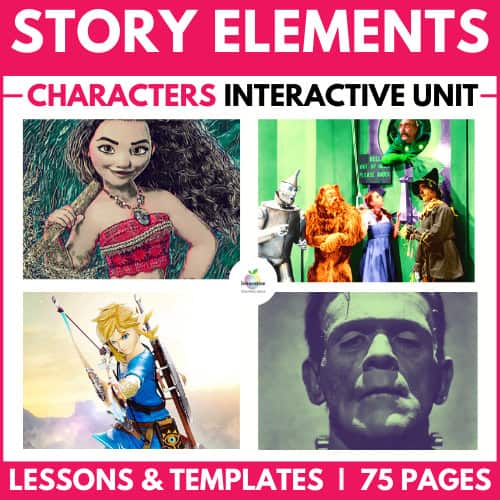
☀️This HUGE resource provides you with all the TOOLS, RESOURCES , and CONTENT to teach students about characters and story elements.
⭐ 75+ PAGES of INTERACTIVE READING, WRITING and COMPREHENSION content and NO PREPARATION REQUIRED.
Character Development IN SHORT STORY WRITING

No doubt about it, characterization is essential to the success of any short story. Just how important characterization is will depend on whether the story is plot-driven or action-driven.
In the best writing, regardless of genre or length, the characters will be at least plausible. There is a lot that students can do to ensure their stories are populated with more than just cardboard cutouts.
One effective way to do this is to reveal a character through their actions. This is the old show, don’t tell trick at work.
A good short story writer will allow the character to reveal their temperament and personality through their actions.
For example, instead of merely describing a character as putting a mug on the table, perhaps they bring it down with a thud that betrays their anger.
Another great way to reveal character is in the use of dialogue. How characters speak to each other in a story can reveal a lot about their status, mood, and intent, etc.
Our students must learn to draw complex characters. Archetypes may serve us well in some contexts, but archetypes are not real people. They are caricatures. If our students want to people their fictional world with real people, they need to create complex, even contradictory characters, just like you and I are.
If their characters are too consistent, they are too predictable. Predictability kills suspense, which in turn kills the reader’s interest.
Practice Activity: Reveal Mood through Action
For this simple activity, provide the students with a list of emotions. Now, challenge the students to concoct a short scene where a character performs an action or actions that reveal the chosen mood.
To start, you might allow the students a paragraph in which to reveal the emotion. You might reduce this to just a sentence or two as they get better at it. Remind students that they need to show the emotion, not tell it!
HOW TO POLISH AND REFINE A SHORT STORY
Now students have already had a look at how to begin and how to structure a story, we’ll take a look at a few quick tips on how they can polish their stories generally – especially during the editing process.

Write Convincing Dialogue:
For students, investing time in learning how to write great dialogue is time well spent.
Not only is well-written dialogue great for revealing character, but it will break up intimidating walls of text too.
Dialogue is a great way to move the story forward and to provide subtle exposition.
As mentioned earlier, journals are the perfect place to dump interesting snatches of conversation that become a valuable resource for writing convincing dialogue – except, of course, if you are passing through North Korea or the like!
Vary Sentence Length:
When finished with their first drafts, encourage students to read their work out loud when editing and rewriting.
Often, students will be surprised to realize just how regular the rhythm of their sentences has become.
Like musicians, writers have chops. It’s easy to fall back on the same few favored structures time and again. Students can do a lot to spice up their writing simply by varying sentence lengths.
Shorter sentences are pacier and punchier while longer sentences can slow things down, calming the reader, then, boom!
Varying sentence length throughout a story prevents the writing from becoming stale and monotonous.
Punctuation:
As with varying sentence length above, the rhythm of a story can be altered through the choice of punctuation.
Students can think of punctuation as musical notation marks. It’s designed to help the reader understand the composer’s intention for how it is to be read and interpreted.
Students should understand punctuation as an imperfect but effective tool. Its use affects not only the work’s rhythm but also the meaning.
It is well worth the student’s time to perfect their use of punctuation.
To Conclude
There are a lot of moving parts to short stories.
From the nuts and bolts of grammar and punctuation to crafting a plot and exploring big thematic ideas, mastering the art of short story writing takes time and lots of practice.
With so much ground to cover, it’s impossible to address every aspect in a single unit of work on short story writing.
Be sure to offer students opportunities to see the short story in action in the work of accomplished writers, as well as opportunities to practice the various aspects of short story writing mentioned above.
Draw attention to writing best practices when they appear even in work unrelated to the short story.
Lots of time and plenty of practice might just reveal a latter-day O. Henry or Edgar Allen Poe sat in one of the desks right in front of you.
SHORT STORY WRITING CHECKLIST BUNDLE

SHORT STORY WRITING VIDEO TUTORIAL

ARTICLES RELATED TO SHORT STORY WRITING

How to Write a Scary Story
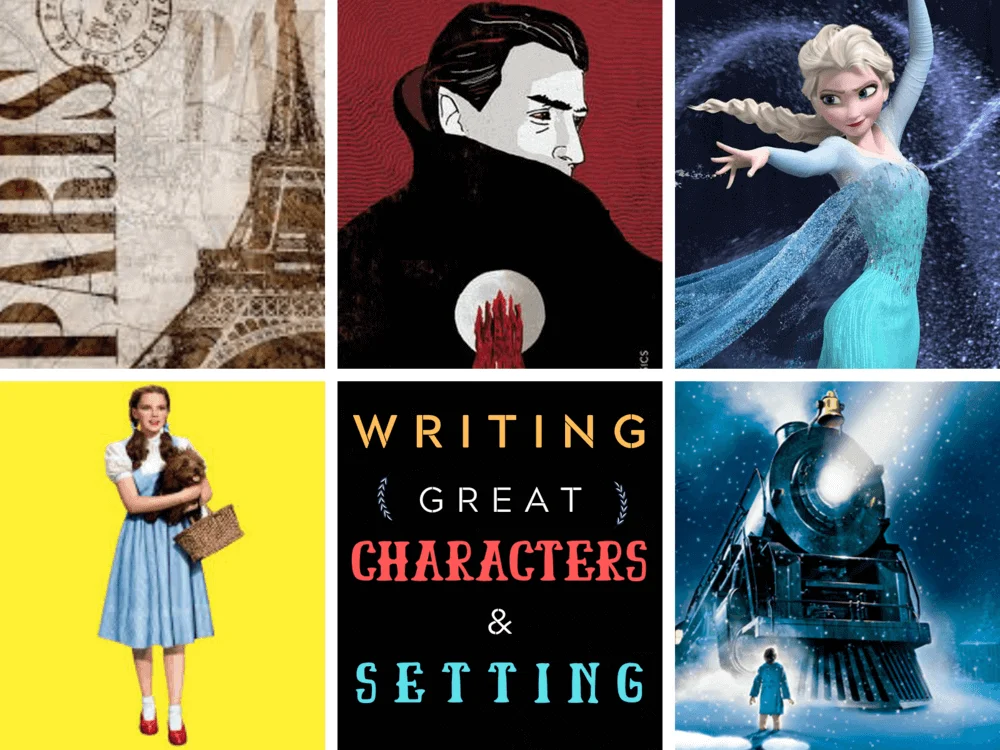
7 ways to write great Characters and Settings | Story Elements
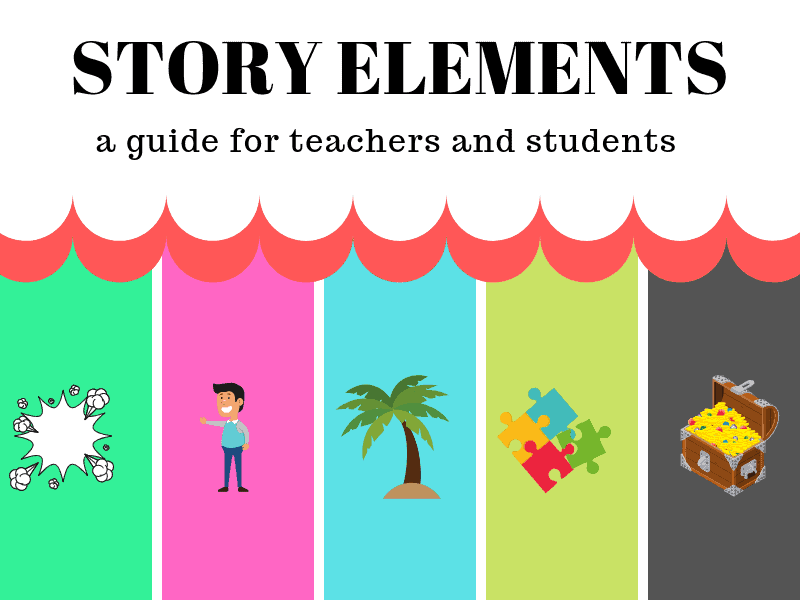
Teaching The 5 Story Elements: A Complete Guide for Teachers & Students
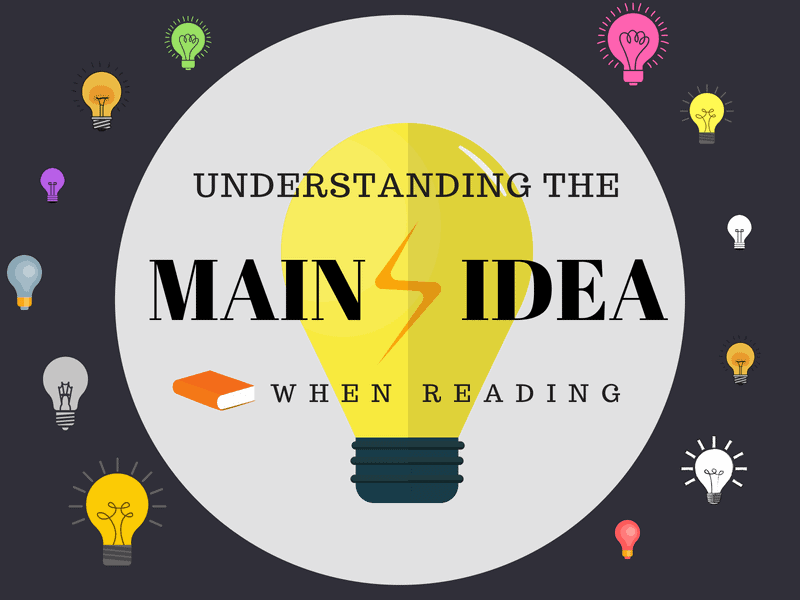
Identifying the main idea of the story: A Guide for Students and Teachers
Teacher Comments :
This rubric is from www.TeacherJet.com
MiG 3 main list +
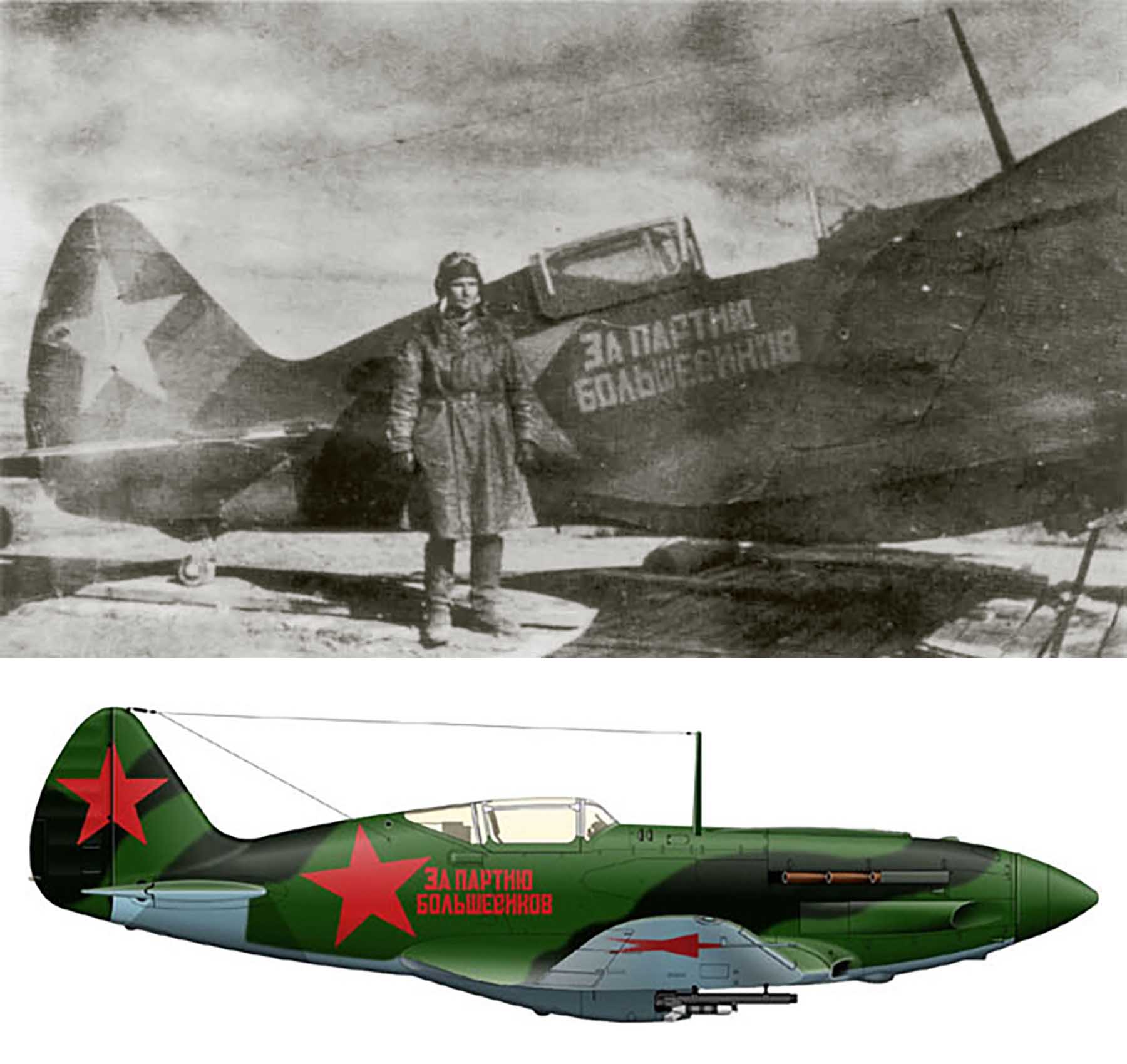
Mikoyan Gurevich MiG 3 172IAP For the Party of Bolsheviks with Nikolai Sheyenko May 1942 01
Mikoyan-Gurevich MiG-3
National origin:- Soviet Union Role:- Fighter Interceptor Manufacturer:- Mikoyan-Gurevich Designer:- First flight:- 29th October 1940 Introduction:- 1941 Status:- Retired 1945 Produced:- 1940-1941 Number built:- 3,422 Primary users:- Soviet Air Forces (VVS); Soviet Air Defence Forces (PVO); Soviet Naval Aviation Developed from:- Mikoyan-Gurevich MiG-1 Variants:- Mikoyan-Gurevich I-211 Operational history MiG-3s were delivered to frontline fighter regiments beginning in the spring of 1941 and were a handful for pilots accustomed to the lower-performance and docile Polikarpov I-152 and I-153 biplanes and the Polikarpov I-16 monoplane. It remained tricky and demanding to fly even after the extensive improvements made over the MiG-1. Many fighter regiments had not kept pace in training pilots to handle the MiG and the rapid pace of deliveries resulted in many units having more MiGs than trained pilots during the German invasion. By 1 June 1941, 1,029 MIG-3s were on strength, but there were only 494 trained pilots. In contrast to the untrained pilots of the 31st Fighter Regiment, those of the 4th Fighter Regiment were able to claim three German high-altitude reconnaissance aircraft shot down before war broke out in June 1941. However high-altitude combat of this sort was to prove to be uncommon on the Eastern Front where most air-to-air engagements were at altitudes well below 5,000 metres (16,000 ft). At these altitudes the MiG-3 was outclassed by the Bf 109 in all respects, and even by other new Soviet fighters such as the Yakovlev Yak-1. Furthermore, the shortage of ground-attack aircraft in 1941 forced it into that role as well, for which it was totally unsuited. Pilot Alexander E. Shvarev recalled: "The Mig was perfect at altitudes of 4,000 m and above. But at lower altitudes it was, as they say, 'a cow'. That was the first weakness. The second was its armament: weapons failure dogged this aircraft. The third weakness was its gunsights, which were inaccurate: that's why we closed in as much as we could and fired point blank." On 22 June 1941, most MiG-3s and MiG-1s were in the border military districts of the Soviet Union. The Leningrad Military District had 164, 135 were in the Baltic Military District, 233 in the Western Special Military District, 190 in the Kiev Military District and 195 in the Odessa Military District for a total of 917 on hand, of which only 81 were non-operational. An additional 64 MiGs were assigned to Naval Aviation, 38 in the Air Force of the Baltic Fleet and 26 in the Air Force of the Black Sea Fleet. The 4th and 55th Fighter Regiments had most of the MiG-3s assigned to the Odessa Military District and their experiences on the first day of the war may be taken as typical. The 4th, an experienced unit, shot down a Romanian Bristol Blenheim reconnaissance bomber, confirmed by postwar research, and lost one aircraft which crashed into an obstacle on takeoff. The 55th was much less experienced with the MiG-3 and claimed three aircraft shot down, although recent research confirms only one German Henschel Hs 126 was 40% damaged, and suffered three pilots killed and nine aircraft lost. The most unusual case was the pair of MiG-3s dispatched from the 55th on a reconnaissance mission to PloieÅŸti that failed to properly calculate their fuel consumption and both were forced to land when they ran out of fuel. Most of the MiG-3s assigned to the interior military districts were transferred to the PVO where their lack of performance at low altitudes was not so important. On 10 July 299 were assigned to the PVO, the bulk of them belonging to the 6th PVO Corps at Moscow, while only 293 remained with the VVS, and 60 with the Naval Air Forces, a total of only 652 despite deliveries of several hundred aircraft. By 1 October, on the eve of the German offensive towards Moscow codenamed Operation Typhoon, only 257 were assigned to VVS units, 209 to the PVO, and 46 to the Navy, a total of only 512, a decrease of 140 fighters since 10 July, despite deliveries of over a thousand aircraft in the intervening period. By 5 December, the start of the Soviet counter-offensive that drove the Germans back from the gates of Moscow, the Navy had 33 MiGs on hand, the VVS 210, and the PVO 309. This was a total of 552, an increase of only 40 aircraft from 1 October. Over the winter of 1941-42 the Soviets transferred all of the remaining MiG-3s to the Navy and PVO so that on 1 May 1942 none were left on strength with the VVS. By 1 May 1942, Naval Aviation had 37 MiGs on strength, while the PVO had 323 on hand on 10 May. By 1 June 1944, the Navy had transferred all its aircraft to the PVO, which reported only 17 on its own strength, and all of those were gone by 1 January 1945. Undoubtedly more remained in training units and the like, but none were assigned to combat units by then.

Send Mail Please help us to improve these articles with any additional information or photo's. If you should encounter any bugs broken links, or display errors just email us.
If you love our website please add a like on facebook
Please donate so we can make this site even better !!
This webpage was updated 2nd August 2021
Lyubertsy, Moscow
Around the globe, hurricane tracker.
Severe Weather
Radar & Maps
News & features.
April 3 - May 17
Orange Warning for Rain-Flood
11:00 PM Tuesday - 2:00 PM Saturday
Yellow Warning for Thunderstorms
9:00 AM Wednesday - 6:00 PM Wednesday
Yellow Warning for Wind
4:00 AM Wednesday - 4:00 AM Friday
RealFeel® 56°
RealFeel Shade™ 53°
Max UV Index 4 Moderate
Wind SSW 15 mph
RealFeel® 39°
RealFeel Shade™ 39°
Max UV Index 1 Low
Wind WNW 9 mph
RealFeel® 51°
RealFeel Shade™ 47°
Wind ESE 2 mph
RealFeel® 46°
RealFeel Shade™ 46°
Wind NNE 6 mph
RealFeel® 58°
RealFeel Shade™ 58°
Max UV Index 3 Moderate
Wind ENE 5 mph
RealFeel® 57°
RealFeel Shade™ 55°
Wind WSW 12 mph
RealFeel® 54°
Max UV Index 2 Low
Wind W 8 mph
RealFeel Shade™ 50°
Wind NNW 8 mph
RealFeel® 49°
Wind SE 6 mph
RealFeel® 47°
RealFeel Shade™ 44°
Wind NW 8 mph
RealFeel® 42°
RealFeel Shade™ 40°
Wind W 9 mph
Wind SW 10 mph
RealFeel Shade™ 42°
Wind SSW 12 mph
RealFeel Shade™ 49°
Wind NW 6 mph
RealFeel® 48°
RealFeel Shade™ 48°
Wind N 6 mph
Wind ESE 7 mph
RealFeel Shade™ 51°
Wind SSE 7 mph
RealFeel® 50°
Wind ENE 9 mph
RealFeel® 52°
RealFeel Shade™ 52°
Wind ENE 4 mph
Wind NNW 15 mph
RealFeel® 43°
RealFeel Shade™ 38°
Max UV Index 5 Moderate
Wind NW 10 mph
RealFeel® 45°
Wind NW 9 mph
RealFeel® 38°
Wind NNW 9 mph
Wind N 5 mph
Wind ESE 6 mph
RealFeel Shade™ 45°
Wind E 7 mph
Wind E 9 mph
Wind SE 7 mph
RealFeel® 60°
RealFeel Shade™ 54°
Wind WSW 6 mph
RealFeel® 61°
Wind NNE 5 mph
RealFeel® 67°
RealFeel Shade™ 63°
Wind E 4 mph
RealFeel® 64°
RealFeel Shade™ 64°
Wind E 2 mph
RealFeel Shade™ 62°
Wind NE 4 mph
Wind WNW 1 mph
Wind WNW 2 mph
RealFeel® 68°
Wind ESE 5 mph
RealFeel® 65°
Wind SSE 6 mph
RealFeel Shade™ 61°
Wind SSE 8 mph
RealFeel® 63°
Wind W 7 mph
RealFeel® 59°
RealFeel Shade™ 56°
Wind NW 4 mph
RealFeel® 53°
Wind NE 7 mph
Max UV Index 6 High
Wind NNE 8 mph
Top Stories
Severe weather packs a punch as powerful storms press into eastern US

Solar Eclipse 2024
Total solar eclipse cloud forecast: Where will clouds spoil the show?
4 hours ago

Winter Weather
April nor'easter to unload feet of snow in northern New England, NY

Weather Forecasts
Soaking nor’easter to trigger flooding from DC to NYC, Boston

Here's how to participate in #SafePlaceSelfie day
3 hours ago

Featured Stories
LIVE: NASA rockets to blast off during the height of the solar eclipse
LATEST ENTRY
NASA rockets to blast off during the height of the solar eclipse
7 hours ago

Weather News
Home renovation frozen in time reveals Roman building technique

Sharks wearing cameras revealed the world’s largest seagrass ecosystem

‘Artificial sun’ sets 100M degree record in nuclear fusion advance

Pandas aren’t all black and white and scientists now understand why

Weather Near Lyubertsy:
- Balashikha , Moscow
- Moscow , Moscow
- Zelenograd , Moscow
We have updated our Privacy Policy and Cookie Policy .
Get AccuWeather alerts as they happen with our browser notifications.
Notifications Enabled
Thanks! We’ll keep you informed.
Soviet Band of ‘Vigilantes’ Is a Youth Gang Known for Beating Nonconformists
- Show more sharing options
- Copy Link URL Copied!
A gang of thugs was suddenly thrust into the spotlight this week when Soviet officials said gang members, who they called “vigilantes,” broke up demonstrations by dissidents.
The gang, named “Lyubers” after the Moscow suburb Lyubertsy where most of them live, roams the streets of the capital at night, beating punk rockers and other nonconformist teen-agers and robbing black marketeers.
According to press accounts, Lyubers mix Russian nationalism with right-wing philosophy, body-building and martial arts. The gang “uniform” consists of voluminous checked pants, tight white shirts and narrow black ties.
‘Vigilantes’ Blamed
On Thursday, a Foreign Ministry spokesman, Gennady I. Gerasimov, said “home-grown vigilantes,” apparently from the Lyubers gang, not plainclothes security agents, were responsible for roughing up demonstrators seeking emigration rights and the release of a Jewish activist from prison.
It was clear at the scene that the burly men who beat the demonstrators and some Western reporters were not teen-age thugs, but agents backed by police and the KGB secret police.
However, it was very unusual for a Soviet official to acknowledge the existence of such a gang, especially in a news briefing for Western reporters. Teen-age gangs are nothing new to Moscow, but they have rarely been given any attention in the official press.
Opposed to Hippies
The magazine Ogonyok said in a recent article that Lyubers are opposed to nonconformist youths, including hippies, punk rockers, heavy metal fans known as metallists and break dancers.
“Hippies, punks and metallists shame the Soviet way of life,” gang member Boris Taranov, 17, told Ogonyok. “We want to clean them out of the capital.”
The magazine said police know about the activities of the Lyubers but have not been able to take action “for the simple reason that hippies, punks and metallists who have suffered from the Lyubers don’t go to the police.”
The magazine said many Lyubers seem to believe in this “philosophy” but others simply use it as an excuse to beat and rob fellow Muscovites, especially black marketeers who usually carry large sums of money.
No Estimates of Size
There are no estimates on the size of the gang. A gang leader, asked by an Ogonyok reporter how many people he could assemble in a few hours, said a conservative estimate was 200.
The gang members practice boxing, wrestling, judo, karate and weightlifting in basement gymnasiums built from the proceeds of selling stolen goods, Ogonyok said.
“Lyubers practically don’t drink, they don’t smoke and as far as we know, they don’t take drugs,” reporter Vladimir Yakovlev wrote in an article for the magazine.
More to Read

Grief and anger as workers with José Andrés aid kitchen killed in Israeli airstrike in Gaza

The Hawaiian steel guitar changed American music. Can one man keep that tradition alive?
April 1, 2024

Pope exposes confidential details of past conclaves, settles scores with Pope Benedict XVI’s aide
April 2, 2024
Start your day right
Sign up for Essential California for news, features and recommendations from the L.A. Times and beyond in your inbox six days a week.
You may occasionally receive promotional content from the Los Angeles Times.
More From the Los Angeles Times

World & Nation
Uvalde mayor resigns, citing health issues in wake of controversial report on 2022 school shooting

Biden and Xi discuss Taiwan, AI and fentanyl in a push to return to regular talks

12-year-old opens fire at Finland school, killing 1 and wounding 2, police say

Fire at an Istanbul nightclub under renovation kills at least 29 people
- help_outline help
iRubric: Short Story Genre Writing High School rubric

IMAGES
VIDEO
COMMENTS
Short Story Rubric . Key Traits 4 20 pts. 3 15 pts. 2 10 pts. 1 5 pts. pre c IDEAS • The opening lines vividly sent thest ory'smain onflict and haracter s. ... • The cpoint of view is highly consistent. • The tone and voice are accep tabe. • The point of view is onsistent. • The tone and voice are not c early andnot
The story has no resolution. 22 Rubrics for Assessing Student Writing, Listening, & Speaking. High School. Voice. Word Choice & Sentence Fluency. Conventions. Point of view is consistent and effective throughout the story. The writer's choice of narrative voice is exceptionally appropriate to the story's theme.
iRubric UX77569: This rubric assesses students' proficiency in writing a short story based on the topic of their choosing. Story should be typed in Times New Roman, 12 font, double spaced. Length: 4-7 pages. Free rubric builder and assessment tools.
3 points - Gets reader's attention in first paragraph, but hints too much about the story. 2 points - Lacks tension to necessary to capture reader's attention and. gives away too much of the story. 1 point - Has no creative tension to capture the reader and gives away the point of the story. Writing (Maximum 4 points)
Step 3: Describe Each Level. Now, describe what each level means for each criterion. Be specific! For example: Plot (Level 3): The story's plot is engaging, with a clear beginning, middle, and end. It includes unexpected twists that captivate the reader. Plot (Level 2): The story has a good plot with a clear structure.
story. Has no creative tension to capture the reader and states the desire of the story. Writing is creative and original with an interesting story showing a desire and conflict of the main character. Used creative and original ideas to create an interesting and unique story. Showed a clear desire involving conflict on reaching that desire.
the story. Beginning of story has some type of "grabber". The reader is pulled into the story. Catchy beginning was attempted but did not grab the reader's attention. No attempt was made to catch the reader's attention in the beginning of the story. Story
Creative Writing: Original Short Story. Creative Writing: Original Short Story. Writing an original short story, with an emphasis on using the elements of writing to convey meaning. Rubric Code: R738WW.
This is a generalized writing rubric which can fit most narrative story assessments. It follows the 6+1 Writing Traits structure. It is comprised in Microsoft Word, so you can edit it to fit your classroom and learning needs.Enjoy! Subjects: Creative Writing, Short Stories, Writing.
Excellent. Short story is typed and is 2000 or more words, double-spaced in 12-point font. Unique title is present. Only minor errors in grammar and mechanics that don't distract from the story. Good. Short story is typed and is 2 or more pages, double-spaced in 12-point font. Title is present, but may not be unique.
Create a Dramatic Question. The first thing a student needs to do when writing a short story is to create a dramatic question. Without a dramatic question, readers will have no motivation to read on as there will be no story.. This dramatic question can take many forms, but as it will be the driver of the plot, it will be the single most important element of the story.
This assignment provides students with the opportunity to write a meaningful personal narrative that goes beyond just sharing a memory. This memoir writing assignment guides stude
This document provides a rubric for grading short stories. It evaluates stories across several categories, including characters, setting, engaging beginning, plot elements like inciting incident and resolution, organization, creativity, and meeting requirements. Each category is scored on a scale from exceptional to poor, with point values assigned from 5 to 2. The total score is out of 50 ...
Short Story Project. Materials are stapled and/or binded together. Written work is typed or in pen. Author and title are stated and written properly. Materials are organized and written work is either typed or in pen. Author and title are not stated. Materials are organized, but some written work is in pencil.
Our development team has been informed of the issue. This rubric is based on and aligned to CCSS Narrative Writing and Language. It clarifies the expectations for exposition, organization, style, resolution, and conventions for both the student and the teacher. Intended to be utilized in a drafting process, but it encourages students to do ...
Do more with rubrics than ever imagined possible. Only with iRubric . iRubric B5WX39: Rubric title High School Short Story. <!---. Rubric possible points is 100.8. --->Built by toniptaylor using iRubric.com. Free rubric builder and assessment tools.
Mikoyan-Gurevich MiG-3. MiG-3s were delivered to frontline fighter regiments beginning in the spring of 1941 and were a handful for pilots accustomed to the lower-performance and docile Polikarpov I-152 and I-153 biplanes and the Polikarpov I-16 monoplane. It remained tricky and demanding to fly even after the extensive improvements made over ...
Know what's coming with AccuWeather's extended daily forecasts for Lyubertsy, Moscow, Russia. Up to 90 days of daily highs, lows, and precipitation chances.
This short story rubric assesses students' work based on conflict, voice, showing vs. telling, avoiding cliches, and more! Teacher directions and an editable Google Slides link are included! ... This HUGE bundle contains everything a high school creative writing teacher needs to help students embark on an engaging writing journey. All the hard ...
Use this rubric to evaluate short story writing. Have your students write a short story for a fun hands-on learning project. They can use PowerPoint slides to get creative, using
Get directions to 3rd Pochtovoye Otdeleniye Street, 65 and view details like the building's postal code, description, photos, and reviews on each business in the building
Feb. 14, 1987 12 AM PT. Associated Press. MOSCOW —. A gang of thugs was suddenly thrust into the spotlight this week when Soviet officials said gang members, who they called "vigilantes ...
Rubric for students writing a short story that is science fiction or fantasy. Rubric Code: K9BCW9. By lhall85. Ready to use. Public Rubric. Subject: English. Type: Writing. Grade Levels: 9-12.